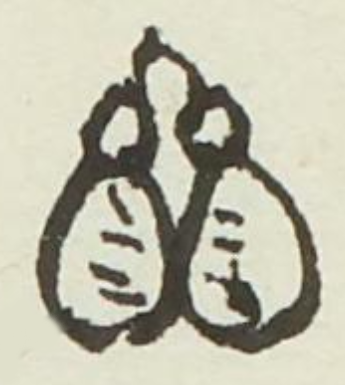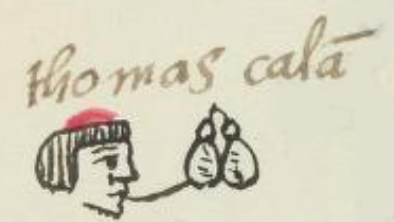Calan (MH876r)
This black-line drawing of the simplex glyph for the personal name Calan (“He Rings Bells”) is attested here as a man’s name. The glyph shows two small bells, side by side, each one with a loop at the top for hanging it, and a line above the loops that appears to tie them together. The bells call forth the verb calani, to ring bells.
Stephanie Wood
The other glyph for Calan that appears below shows just one bell. Bells often had a use in dance, whether attached to ankles or to skirts. One bell in this collection shows sound volutes emerging from the hole at the bottom (see Coyolapan, below), much like speech or song might. Other glyphs that show metal bells (for the purpose of searching) are coyolli.
Stephanie Wood
thomas calā
Tomás Calan
Stephanie Wood
1560
Jeff Haskett-Wood
cascabeles, campanas, campanillas, bailar, tocar, sonar, nombres de hombres

calani, to ring bells, https://nahuatl.wired-humanities.org/content/calani
Él Tocó Campanas
Stephanie Wood
Matrícula de Huexotzinco, folio 876r, World Digital Library, https://www.loc.gov/resource/gdcwdl.wdl_15282/?sp=824&st=image.
This manuscript is hosted by the Library of Congress and the World Digital Library; used here with the Creative Commons, “Attribution-NonCommercial-ShareAlike 3.0 License” (CC-BY-NC-SAq 3.0).




